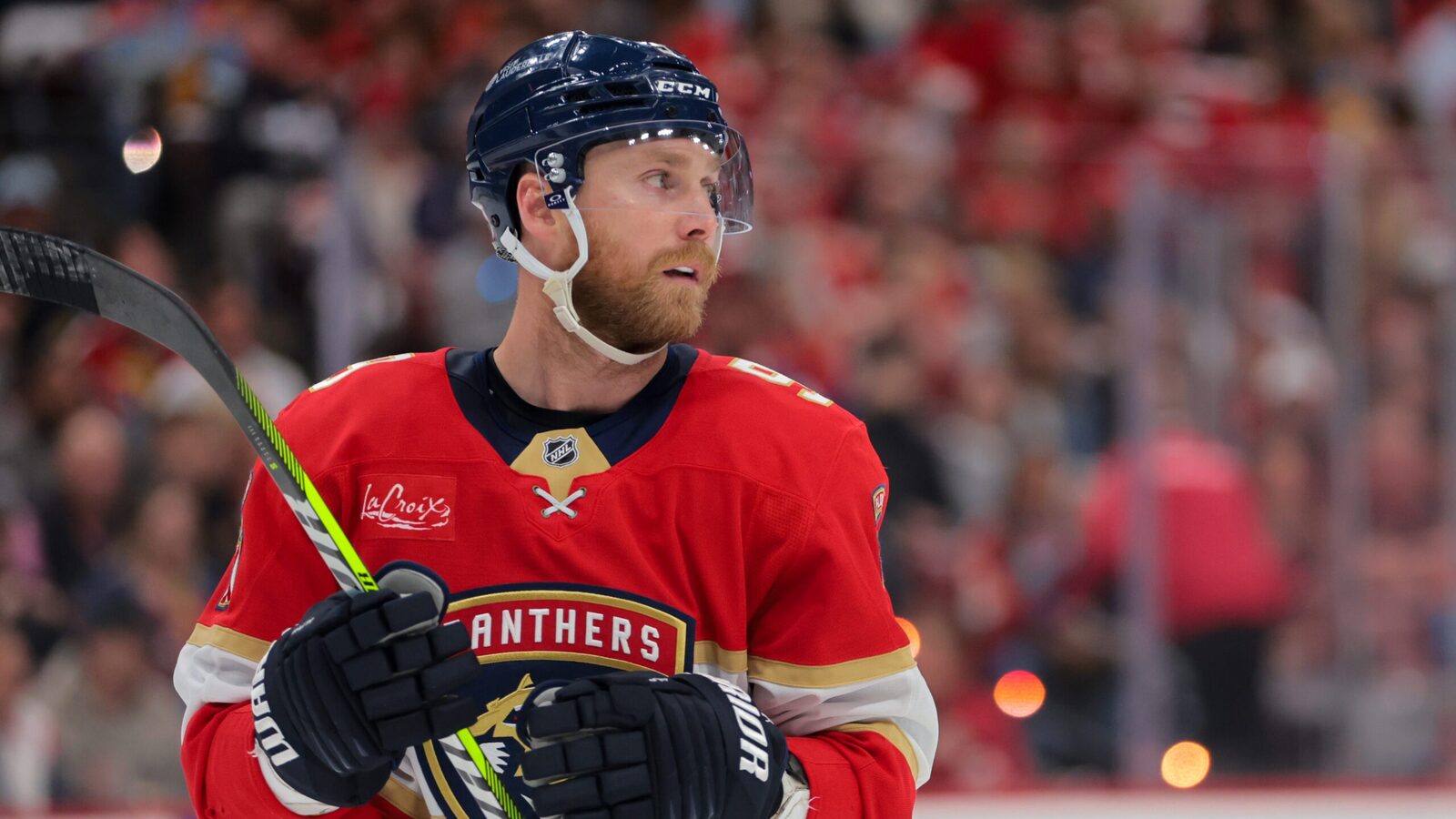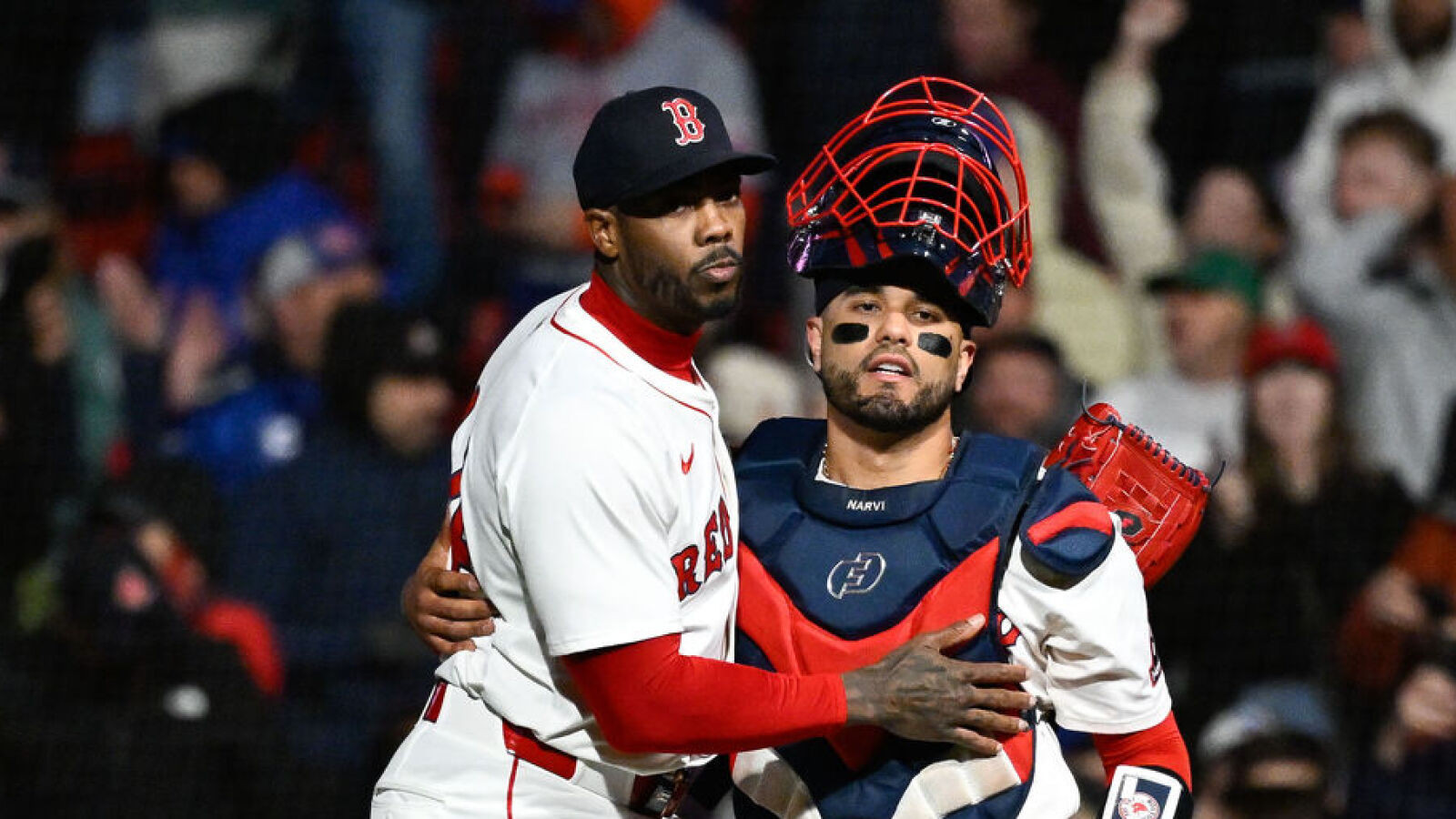
The end of something? The start of something? The continuation of something? The range of outcomes feels massive for the Toronto Maple Leafs‘ offseason following their latest playoff disappointment, a 6-1 home loss in Game 7 of Round 2 versus the Florida Panthers. The Leafs and team president Brendan Shanahan officially parted ways Thursday, and with Core Four forwards Mitch Marner and John Tavares becoming unrestricted free agents July 1, the franchise finds itself at a crossroads.
It’s possible the Leafs and Marner mend fences after a tumultuous season in which he vetoed a trade that would’ve sent him to the Carolina Hurricanes for Mikko Rantanen. And perhaps Tavares puts his family first and returns on a team-friendly contract. But let’s play out the scenario in which neither player returns and their combined $21,903,000 comes off Toronto’s books just as the salary cap spikes from $88 to $95.5 million. Also factoring in the extension for RFA power forward Matthew Knies, how could the Leafs spend their money to replace Marner and Tavares?
Here’s a tiered list of targets that could make sense for GM Brad Treliving. No goalies populate it, as Anthony Stolarz and Joseph Woll remain under contract and were one of the NHL’s top duos this past season. The list is also light on defensemen, as the Leafs already have seven signed for next season and beyond, taking up more than $23 million. It’s not inconceivable that the Leafs tweak the D-corps, but forwards will be a priority if two top-sixers walk.
TIER 1: The obvious reactionary pivot
If the Leafs decide they need to address their clutch problem and add dawgs, they can chase players of this ilk.
Sam Bennett, C
If the Leafs wind up with a canyon of cap space, Bennett, 28, is the slam-dunk target, an Ontario boy whose sandpapery game is so disruptive it directly impacted both Florida’s playoff series wins over the Leafs – when he took out Matthew Knies in 2023 and Anthony Stolarz this spring. Bennett is vicious, he’s reliable defensively and, let’s not forget, he was a No. 4 overall pick, so his hands are underrated. Bennett would bring the jam Toronto has lacked in do-or-die moments, but it will take an overpay to outbid rivals for his services. Does that mean a seven-year deal playing him north of $8 million or even $9 million annually? The Leafs would also have to compete with several U.S. markets that can sign him at a lower AAV because they don’t have state income tax. That includes Bennett’s current team.
Brad Marchand, LW
If the Leafs would rather not commit the major investment on Bennett, Marchand would bring similar attributes but, at 37, wouldn’t require more than a two- or three-year commitment to sign. He brings a higher offensive ceiling than Bennett, but Marchand’s play appeared to be slipping earlier this season, and he’s old enough that the bottom could fall out any one of these years. Still, he’d be an ideal middle-six left winger. And the best way to stop Marchand from knocking you out of the playoffs, which he just did for the fifth time since 2012-13, is to have him play for you.
Aaron Ekblad, D
Ekblad feels like more of a luxury. The Leafs already have two big, right-shot blueliners for their top four in Chris Tanev and Brandon Carlo, and Oliver Ekman-Larsson was mostly effective playing the right side on the third pair this season. But the left remains OEL’s better side; if the Leafs could find a way to move on from Morgan Rielly, they could consider sliding OEL to the left and adding Ekblad to further stack the right. He brings size, mobility and leadership. But he would be a risky investment; at 29, he’s still young enough to command a long-term contract, yet his body has quite a bit of mileage for his age. He hasn’t even eclipsed 75 games in a season since 2018-19, albeit he might have this season had he not been suspended 20 games for PED use.
TIER 2: Marner replacements
There is no true Marner facsimile on the market, but these players would bring some of his skating and playmaking ability – not to mention the spotty playoff track records.
Nikolaj Ehlers, LW
Ehlers is blindingly fast. Most years, he grades out near the top of the league in primary assist rate. His offensive play-driving is consistently underrated. He’s also been criminally underused for much of his time with the Winnipeg Jets. He averages 27 and 63 points per 82 games in his career despite playing just 16:26 per night. The lack of ice time has stopped him from ever reaching 30 goals or 70 points in a season and could thus keep his AAV a relative bargain. If you give him 18 minutes a night, you might see his best production yet. He has historically gone full Milk Carton in the playoffs, tallying just nine goals and 21 points in 45 games, though he got five of those goals this postseason, which was easily his best.
Matt Duchene, C
Like Ehlers, Duchene brings speed and playmaking ability, though Duchene is five years older. Even at 34, though, he managed 30 goals this season, and his 82 points were the second most of his career. The other parallel between Duchene and Ehlers: the atrocious playoff performance. Duchene’s per-game scoring rate drops from 0.78 in the regular season to 0.57 in the playoffs. This postseason with the Dallas Stars, he has one goal in 14 games. His line has fared well in offensive shot and chance generation, but he’s graded out as one of the weakest forwards on the team in terms of creating looks individually. So…not quite a ringing endorsement, right? But Duchene could work as a desperation play to fill a gap and provide top-six scoring during the regular season if Marner leaves. Toronto would be buying high on that big regular season, though.
Mikael Granlund, LW
The Finn is quite the Swiss Army Knife. He can play all three forward positions and both special teams. He can play lower in the lineup in a shutdown role or, as he’s shown in these playoffs, can tap back into his prospect pedigree and function on more of a dynamic offensive unit, giving Dallas some major lifts at times on a line with Roope Hintz and Mikko Rantanen. If you’re looking to directly replace Marner’s versatility in all situations at what should be less than half the cost, Granlund is a sneaky addition. This isn’t to say he’s anything close to Marner, just that he can replicate some of Marner’s duties.
TIER 3: Lower-hanging fruit
These names aren’t sexy but would further beef up the bottom half of Toronto’s lineup, which was a huge disappointment in the postseason.
Brandon Tanev, LW
His brother Chris is already here, and while he joked this week he wasn’t sure if he and Brandon would just fight all the time in the event Brandon signed with the Leafs, Brandon could fit in the bottom six as a banger. He brings speed, energy and the ability to put the puck in the net once in while, having delivered a double-digit goal total in four of his 10 NHL seasons.
Trent Frederic, C
Frederic, 27, has more upside than what he’s shown during his injury-abbreviated 2024-25 as a Trade Deadline add for the Edmonton Oilers. He’s a big, agitating third-line center but had also scored 17 and 18 goals, respectively, in his previous two seasons. The Leafs’ checking forwards were mostly play killers in the playoffs, occasionally swinging momentum on the forecheck but rarely finishing off their chances. Frederic would elevate the bottom six’s ceiling a bit.
Corey Perry, RW
He’s 40 years old. His current run with the Oilers could easily be his last. But if the Leafs wanted to get some of Marchand’s intangibles on a one-year deal at a fraction of the cost, they could sign Perry. He scored 19 goals in the regular season and has added five more in the playoffs. He can still play.
TIER 4: Swing for the fences
These trade targets could create major shifts in Toronto’s roster makeup.
Rasmus Dahlin, D
Calm down. I’m not implying Dahlin is available. But the Leafs clearly lack a dynamic, all-around superstar on their blueline, particularly since Rielly has aged out of being a No. 1 offensive defenseman. The acquisition cost for Dahlin would undoubtedly be sky-high – Easton Cowan, Ben Danford and Rielly even as a starting point? – and the fit may not be there as the Buffalo Sabres need NHLers more than prospects now. But given the desperate state of the Sabres franchise, it can’t hurt to kick the tires on literally any of their players at the moment.
Mathew Barzal, C
It’s possible the next New York Islanders GM decides Barzal is still part of the team’s long-term plans. But the Isles are starting over, armed with the 2025 NHL Draft’s No. 1 pick, and it might make sense to jettison a prime-year star like Barzal if the return is significant. Barzal can play center or the right wing and has the dynamic puck skill to match Marner’s. The acquisition cost would complicate things, as it would require more than simply money to land Barzal. But he’s a name to remember should the Leafs strike out on some free agent targets and find themselves with a major finesse void in their top six.
Nazem Kadri, C
He’s a Stanley Cup winner. He blends nastiness with high-end offensive skill. He’s familiar with the market. He never wanted to leave. Treliving signed Kadri to the Calgary Flames in the first place three years ago, and the Leafs reportedly inquired about him this season. He’s 34 and owed $7 million annually for the next four seasons – basically what Tavares would likely command or what Marchand might want on a shorter term. The Flames would likely ask for some combination of prospects and NHL-ready players in return, however.

